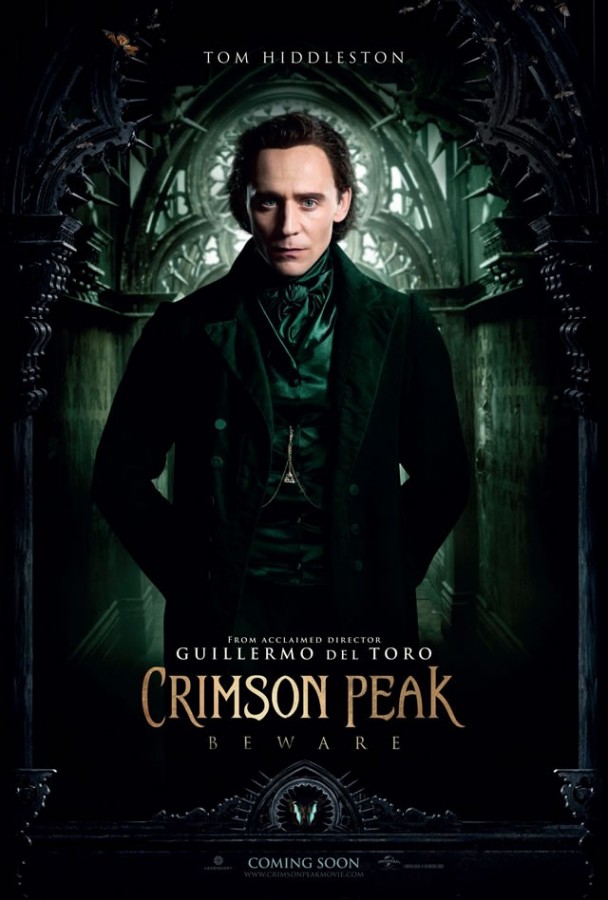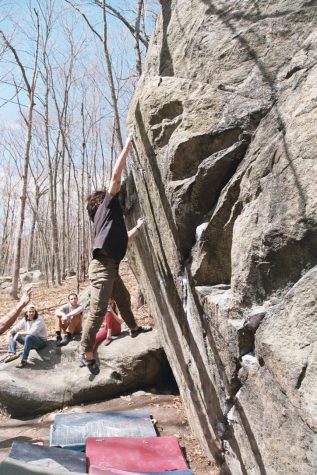‘Crimson Peak’ makes you nostalgic for gothic romance
In the world of Gothic Romance, females reign supreme. Throughout the nineteenth to twentieth century, authors such as V.C. Andrews, Anne Rice, and the Brontë sisters dominated the sales racks for their disturbing novels. As time went on, the classics of this genre have dwindled in popularity.
Until now.
On October 16, Guillermo del Toro’s Crimson Peak was released to the general public and brought back the campy yet dark nature that had once consumed my own childhood.
All of the components that once made Gothic Romance a trailblazer for women writers is present within the entirety of the film. The heroine, New York native Edith Cushing (Mia Wasikowska), prides herself on her intelligence and talent in writing, but abandons all inhibitions after marrying the dark and brooding English Baronet Sir Thomas Sharpe (Tom Hiddleston). Despite knowing each other for a short time, they declare that they are “in love,” a spur of the moment decision that sparks both the external and internal conflict. Cushing is whisked off to the eerie and desolate castle christened by the locals as “Crimson Peak” for its unusual foundation surrounded by billowing mounds of blood-red mud. Guillermo traps his heroine in the dismantled castle, the core brimming with forces such as supernatural phantasms and Sharpe’s aloof sister, Lucille (Jessica Chastain). The perfect mixture of sinister and sublime.
Despite the riveting storyline of the film, the dialogue is a distraction. As del Toro had modeled most of the script off old Gothic novels, some lines come off as so flowery and outdated that they minimize the intensity of the characters’ debacles.
In one instance, as Thomas is holding Edith in an embrace, she whispers, “You’re always looking to the past, you won’t find me there.” This cheesiness combined with little chemistry between Wasikowska and Hiddleston leads to a cringe-worthy moment.
Along with the dialogue, the CGI apparitions border the fine line of terrifying to just plain far-fetched. The spirits who roam the halls of Crimson Peak are bathed in filmy globs of gummy blood. Chunks roll off each figure in soft waves, trailing behind them as the monsters rip out from the rug-clad floorboards or float below a shattered, glistening chandelier. Their limbs are creaking and joints are twisting, they are the product of nightmares, albeit unrealistic in their execution.
Nonetheless, Chastain manages to salvage the cheesy lines and digital ghosts with an astonishing performance as Lucille Sharpe. She is the classic Gothic antagonist stewing with condemnation toward the heroine. Her very essence merges with both insanity and elegance making her the focus of the film from start to finish. Even when the camera pans on Edith, there is a sense of dark magic centering on Lucille, an otherworldly, occult glow that causes any viewer to concentrate solely on her. She is, ultimately, Edith’s foil. Where she is bathed in blacks and navy blues, Cushing is doused in warm creams and soft oranges. Without one, the other falls flat.
As a whole, Crimson Peak is packed with the same formula that made Gothic Romance unforgettable. For those like myself who grew up on novels such as Flowers in the Attic and Interview With a Vampire, this movie will bring about a wave of nostalgia. Despite its technical faults, there is some life left in this ghost story.
8/10 (magnificent scenery, awkward romantic encounters, cute dog throughout).







